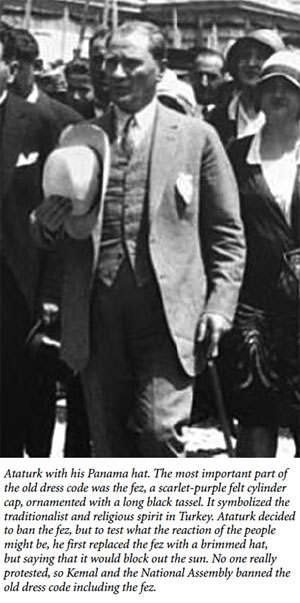Fourth Way Perspectives
Film Review: The Seekers of Truth
Filled with many never before seen photos and live footage of Mr. Gurdjieff, the documentary is far stronger dramatically than the film Meetings with Remarkable Men and Jean-Claude Lubtchansky's previous documentary, G. I. Gurdjieff. It will certainly take a prominent place among the growing archives of one of the 20th century's seminal spiritual teachers.

Conceived by Michel de Salzmann before his death in 2001 and brought to fruition by Lubtchansky, The Seekers of Truth resonates with a clarity and economy that present a compelling introduction to Gurdjieff, his life and his teaching. The two voice-overs, one a neutral voice-over, the other acting as Gurdjieff's, give an objectivity and an intimacy that matches the material. Unfortunately, the video and the two which are to follow (the project is conceived as a trilogy) are "for private distribution only." At a time earlier than 2005, the date of this video's release, that might have been possible, but with the rise of the Internet, it offers the growing band of Internet pirates an inviting target. That Lubtchansky, well into his late 70s and perhaps more, would not have recognized this is understandable. What is not is that Seekers of Truth—given the full-scale depiction of Gurdjieff's life in the video trilogy The Life & Significance of G. I. Gurdjieff, as well as the books of Gurdjieff and those close to him—is so bowdlerized, so factually untrue in many places.
Beginning with the sidestepping of Gurdjieff's birth—was it 1866, 1872 or 1877?—the documentary passes over mention of the Sarmoung Brotherhood, the map of pre-sand Egypt, the discovery in Egypt of the existence of "Christianity before Christ," and speaks of Gurdjieff introducing the teaching to the West as a "task" and not a "mission." There are a number of lesser omissions and changes, such as saying that Gurdjieff began the writing of All and Everything on January 1, 1925, when his secretary Olga de Hartmann says he began dictating the book to her on December 16, 1924. In addition, there is no mention of the problems with Ouspensky, Orage and Bennett. What is the point of so obviously denying the written record?
And why does the documentary begin with the image of Gurdjieff in a fez (and not a very becoming image at that), given the Sufis' unflagging fixation to brand Gurdjieff's teaching as their own? Most notorious and laughable on this count was the 1966 publication of Teachers of Gurdjieff, a supposedly eyewitness account by Raphael LeFort unmasked as pure hokum, its real author being Idries Shah. Not only does the documentary begin with Gurdjieff wearing a fez, but it ends with a number of photos and live footage of Gurdjieff wearing a fez. What is the subliminal message?
The fez for Gurdjieff was a symbol of his rejection of materialistic Western values and Kemal Ataturk's imposition of a secular Turkish government, which banned the wearing of the fez—the reason he left Constantinople in 1921 for Europe.
Baptized a Christian, buried a Christian and praying to the Christian trinity (see the beginning of All and Everything), Gurdjieff was clearly not a Sufi. And when asked the source of the teaching Gurdjieff states, "This is esoteric Christianity." [Emphasis in original.] And later at the Prieuré when he is speaking about the Institute for the Harmonious Development of Man, he says, "The program of the Institute, the power of the Institute, the aim of the Institute, the possibilities of the Institute can be expressed in a few words: the Institute can help one to be able to be a Christian. Simple!" Why then the confusion?
Notes
1.
G. I. Gurdjieff. Lubtchansky's earlier documentary by this name, made in the 1970s or 80s, features interviews with Michel de Salzmann, Henri Tracol, Jean Vaysse, Maurice Deselle, Pierre Schaeffer, Phillipe Lavastine and others.
2. Gurdjieff's birth. Gurdjieff's passport gives the date as 1877. James Moore believes it was 1866. Olga de Hartmann, Louise March, J.G. Bennett and William Patrick Patterson believe it was 1872.
3. Sarmoung Brotherhood, Pre-Sand Egypt.. G.I. Gurdjieff, Meetings with Remarkable Men, p. 90, 99, 120, 148—64.
4. Dictation of All and Everything. Thomas and Olga de Hartmann, Our Life with Mr. Gurdjieff, pp. 239, 269, and "What For?" Olga de Hartmann, unpublished typescript, p. 183.
5. Christian trinity. G. I. Gurdjieff, All and Everything, p. 3.
6. "This is esoteric Christianity". P.D. Ouspensky, In Search of the Miraculous, p. 102.
7. The program of the Institute. G.I. Gurdjieff, Views from the Real World, p. 152.

